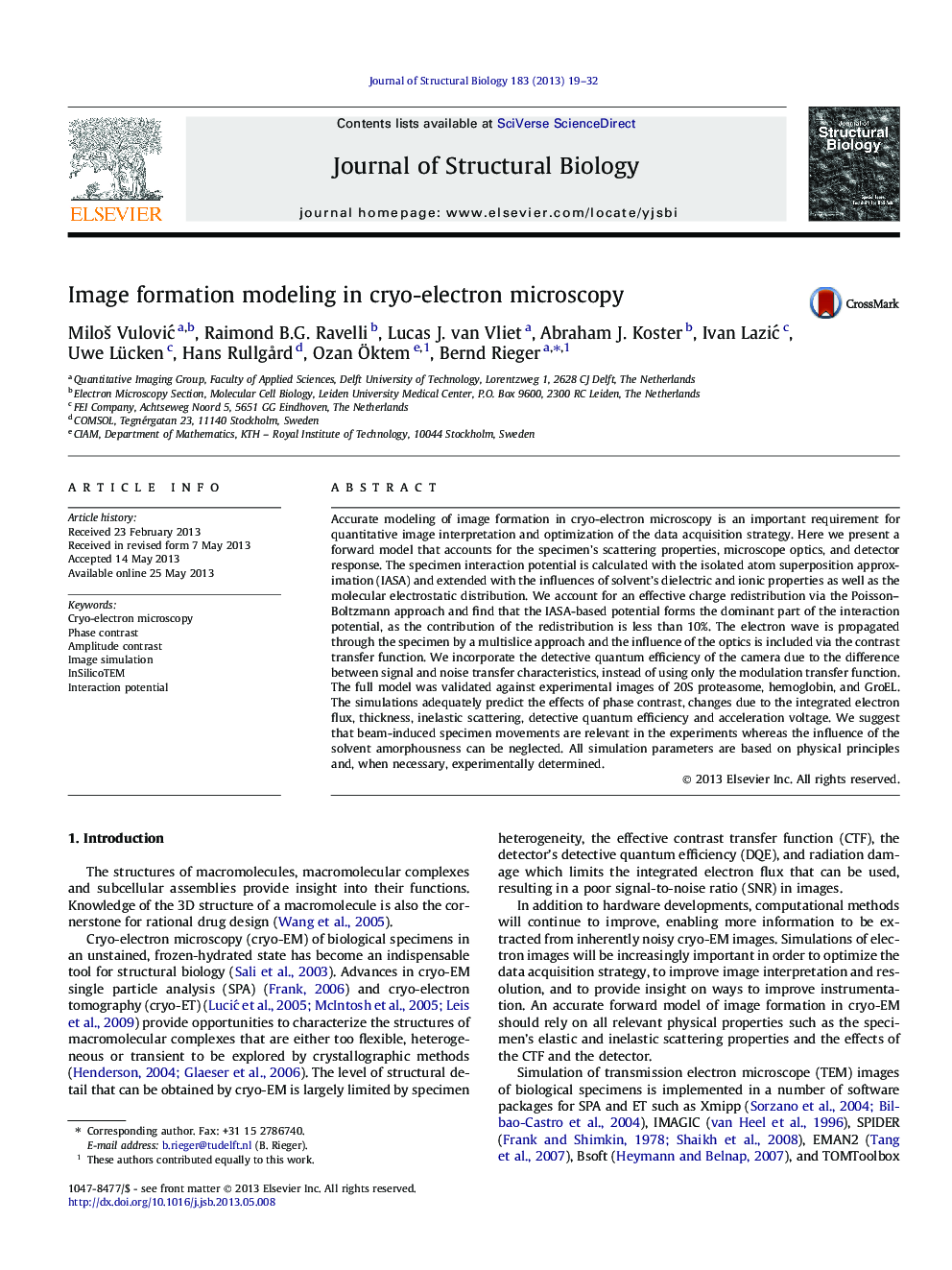| Article ID | Journal | Published Year | Pages | File Type |
|---|---|---|---|---|
| 5914215 | Journal of Structural Biology | 2013 | 14 Pages |
Accurate modeling of image formation in cryo-electron microscopy is an important requirement for quantitative image interpretation and optimization of the data acquisition strategy. Here we present a forward model that accounts for the specimen's scattering properties, microscope optics, and detector response. The specimen interaction potential is calculated with the isolated atom superposition approximation (IASA) and extended with the influences of solvent's dielectric and ionic properties as well as the molecular electrostatic distribution. We account for an effective charge redistribution via the Poisson-Boltzmann approach and find that the IASA-based potential forms the dominant part of the interaction potential, as the contribution of the redistribution is less than 10%. The electron wave is propagated through the specimen by a multislice approach and the influence of the optics is included via the contrast transfer function. We incorporate the detective quantum efficiency of the camera due to the difference between signal and noise transfer characteristics, instead of using only the modulation transfer function. The full model was validated against experimental images of 20S proteasome, hemoglobin, and GroEL. The simulations adequately predict the effects of phase contrast, changes due to the integrated electron flux, thickness, inelastic scattering, detective quantum efficiency and acceleration voltage. We suggest that beam-induced specimen movements are relevant in the experiments whereas the influence of the solvent amorphousness can be neglected. All simulation parameters are based on physical principles and, when necessary, experimentally determined.
